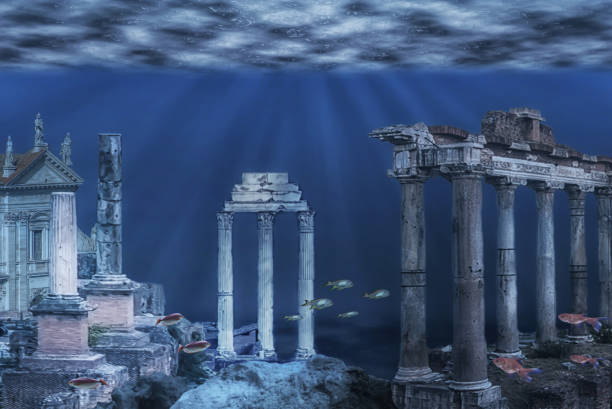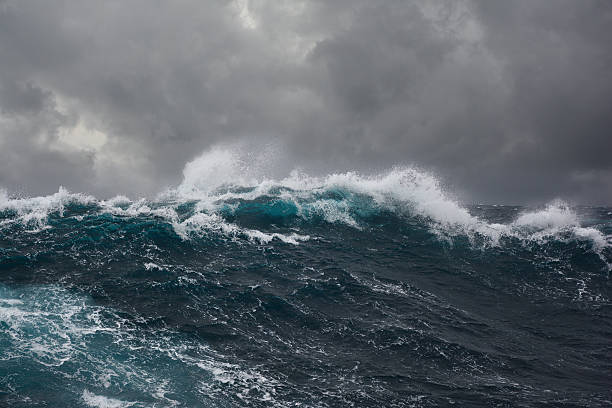Since the dawn of civilization, the oceans have held a dual identity in the human imagination. They are both a source of life and mystery, a vast frontier that simultaneously nourishes us and hides its secrets beyond the blue horizon. Ancient myths spoke of lost cities beneath the sea—Atlantis, Lyonesse, and realms where gods and mortals mingled under waves. These were stories, of course, but they revealed a yearning: the idea that humanity might one day live beneath the surface, claiming a space long reserved for fish, whales, and creatures both known and unknown.
In the modern age, this dream has transformed from myth into a serious scientific question. Could humans truly build underwater cities—not temporary research stations or luxury hotels for the wealthy elite, but thriving, permanent communities where families live, children grow up, and societies flourish? To explore this possibility is to confront not only the limits of technology but also the resilience of human imagination.
The Ocean as the Last Great Frontier
The oceans cover more than 70 percent of Earth’s surface, yet humanity occupies only a sliver of habitable land. Space exploration often captures the public imagination as the next frontier, but in many ways, the ocean is even more alien than Mars. While we have mapped distant planets with telescopes and sent robots across the Martian surface, vast portions of the deep sea remain uncharted. More than 80 percent of the ocean floor has never been mapped in detail.
For urban planners, futurists, and scientists, this raises an enticing proposition: if we can harness the ocean, we could unlock an almost limitless expanse of new territory for human habitation. Underwater cities could relieve population pressures on land, open new avenues for resource extraction, and even protect communities from rising sea levels brought on by climate change.
Yet to live beneath the waves is no simple task. The ocean is a hostile environment, governed by pressures, darkness, and ecological balances that resist human intrusion. To understand whether such cities are possible, we must first understand the scientific challenges that make them so daunting.
The Crushing Weight of the Deep
One of the most formidable obstacles to underwater living is pressure. At sea level, the human body is adapted to the weight of the atmosphere pressing down on us—about one kilogram per square centimeter. But descend just ten meters underwater, and that pressure doubles. At one hundred meters, the pressure is ten times greater than on land. Beyond that, it grows exponentially more dangerous.
For humans, prolonged exposure to high pressures can cause nitrogen to dissolve into the bloodstream, leading to a condition known as “the bends” when surfacing too quickly. At extreme depths, oxygen itself becomes toxic, while helium and other gases distort brain function. Our physiology is simply not built for life in the pressurized environment of the deep.
Any underwater city, therefore, would need to protect its inhabitants from these conditions. Structures would have to be engineered like spacecraft—sealed against external forces, maintaining a stable internal environment where pressure, oxygen, and temperature are carefully regulated. This is not impossible, but it demands technology at the very limits of human engineering.
Breathing in an Alien World
Oxygen is another central challenge. On land, the atmosphere provides a ready supply, but beneath the ocean, oxygen is dissolved in water at much lower concentrations. While fish extract it through gills, humans cannot. Underwater cities would need sophisticated life-support systems to recycle air, scrub carbon dioxide, and produce oxygen continuously.
This is not an unfamiliar problem—space stations such as the International Space Station (ISS) have sustained crews for decades through closed-loop systems. Similar principles could be applied underwater, with oxygen generated through electrolysis of water and supplemented by biological solutions such as algae bioreactors. In fact, algae could play a dual role, both producing oxygen and serving as a food source in carefully managed aquaculture systems.
But maintaining breathable air on a city-wide scale is no trivial matter. Every system must be redundant, and failures could be catastrophic in a matter of minutes. For this reason, early underwater habitats have been small and tightly controlled, suitable for researchers but not for large civilian populations.
Light, Food, and the Problem of Isolation
Beyond the basics of pressure and air, an underwater city would face more subtle but equally significant challenges. Sunlight penetrates only a limited distance into the ocean. At 200 meters, the “twilight zone” begins, where light fades into dim blue. Below 1,000 meters, darkness is absolute. Without access to natural light, human circadian rhythms suffer. People deprived of sunlight often experience depression, insomnia, and vitamin deficiencies.
To counter this, underwater cities would require sophisticated lighting systems designed not only to illuminate but to mimic the natural cycle of day and night. Artificial environments can be engineered to trick the body into maintaining healthy rhythms, but the psychological effects of permanent isolation from the surface world are difficult to predict. Would generations raised beneath the sea adapt naturally, or would they feel a constant sense of exile from the wider world?
Food production presents another barrier. Transporting supplies from the surface would be expensive and unsustainable. Instead, underwater cities would need to cultivate self-sufficiency, likely through aquaculture and hydroponics. Farming fish, seaweed, shellfish, and algae could provide dietary staples, while hydroponic gardens could grow fruits and vegetables under artificial lights. This integration of ocean resources with controlled agriculture would be essential, but it would demand careful ecological balance to avoid contaminating the surrounding marine environment.
Engineering the Impossible
If humans are to live beneath the sea, architecture must evolve into something unprecedented. Buildings on land are designed to resist gravity, but underwater, they must also resist pressure and buoyancy. Habitats must be strong enough to prevent collapse under external forces, yet heavy enough to avoid floating upward. Materials like reinforced steel, titanium, and advanced composites would be required, alongside pressure-resistant glass to provide views into the ocean beyond.
There are two main models for underwater construction. One envisions domes or capsules anchored to the seafloor, much like current research stations. These would resemble bubbles of life embedded in the deep, each connected by tunnels. The other model imagines floating platforms tethered to the seabed but suspended at mid-water, using ballast systems to maintain stability.
Both approaches carry advantages and risks. Seafloor structures are more stable but harder to construct and maintain. Floating habitats are easier to build but more vulnerable to currents and storms. Hybrid models may ultimately prove most viable, with cities combining anchored foundations and floating extensions.
Lessons from Past Experiments
The dream of underwater living is not entirely untested. Throughout the twentieth century, several ambitious projects explored the feasibility of submerged habitats. In the 1960s, Jacques Cousteau’s “Conshelf” experiments placed divers in undersea habitats off the coast of France, where they lived and worked for weeks at a time. Around the same period, the U.S. Navy launched “Sealab,” a series of underwater bases designed to study human endurance under the sea.
These projects revealed both the potential and the limitations of underwater life. Divers were able to adapt to pressurized environments for extended periods, but psychological strain, equipment failures, and the difficulty of resupply made the ventures unsustainable. More recently, the Aquarius Reef Base in Florida has served as a working undersea laboratory for marine biologists, though its small scale limits its relevance to urban-scale living.
These experiments proved that humans could live underwater temporarily, but they also underscored the enormous leap required to transition from research outposts to permanent cities.
Environmental Harmony or Ecological Disaster?
The question of underwater cities is not merely technological but ecological. Oceans are fragile ecosystems already under stress from climate change, overfishing, and pollution. To place human settlements beneath the waves risks compounding these problems. Waste management, energy use, and construction could damage habitats, disrupt marine life, and release toxins into sensitive environments.
On the other hand, some argue that carefully designed underwater cities could foster a new symbiosis with the ocean. By harnessing renewable energy from tides, currents, and thermal gradients, such settlements could operate sustainably. Waste could be recycled, aquaculture could provide food without overfishing, and research stations could monitor and protect marine biodiversity.
The balance between exploitation and harmony would be delicate. Humanity has rarely excelled at restraint when it comes to natural resources. The survival of underwater cities would depend on building not only with technological sophistication but with ecological humility.
The Psychological Frontier
Perhaps the greatest unknown in the dream of underwater living is not material but psychological. Humans are creatures of the land, evolved under the open sky. How would we fare in a world enclosed by walls, surrounded by endless water? Would claustrophobia and isolation erode mental health, or would new cultures emerge adapted to life beneath the sea?
Psychologists studying submariners and astronauts provide some clues. In both cases, individuals confined to extreme environments develop strong communal bonds but also suffer from stress, monotony, and occasional conflict. Scaling this to entire cities magnifies the challenge. Education, recreation, art, and social life would need to be carefully cultivated to sustain a sense of normalcy.
Yet history shows that humans are remarkably adaptable. Arctic settlements, desert outposts, and even space stations demonstrate that when given purpose and support, people can thrive in hostile environments. The question is not whether we could survive under the sea, but whether we could flourish.
The Role of Technology in Making the Dream Real
Recent advances hint at possibilities once confined to science fiction. Nanotechnology offers stronger, lighter building materials capable of withstanding pressure. Artificial intelligence could regulate life-support systems, predict equipment failures, and manage resource distribution. Renewable energy sources—tidal turbines, wave generators, and ocean thermal energy conversion—could power entire communities without fossil fuels.
Communication, once a barrier, is also improving. Fiber-optic cables and satellite relays could connect underwater cities seamlessly with the global internet, erasing the sense of isolation. Robotics and drones could perform maintenance, harvest resources, and explore surrounding areas, reducing human risk.
The convergence of these technologies makes the prospect of underwater cities more plausible than ever. Yet cost remains astronomical, and the will to invest in such projects is uncertain in a world where terrestrial problems remain urgent.
Would We Choose to Live Beneath the Sea?
Even if underwater cities become technically possible, another question lingers: would people actually want to live there? The novelty of ocean life might attract pioneers and adventurers, but would families choose to raise children in such environments? Would people accept the absence of skies, forests, and landscapes?
The answer may depend on necessity. Rising sea levels, shrinking land availability, and climate crises could one day make underwater living less of a choice and more of a survival strategy. In that scenario, humanity might embrace the sea not out of desire but out of need. Alternatively, underwater cities could begin as experimental enclaves, attracting those who crave novelty, and gradually expand as comfort and familiarity grow.
A Vision of the Future
Imagine, for a moment, the daily life of such a city. Transparent domes glow beneath the waves, lit by artificial suns that mimic daylight. Schools and homes are connected by tunnels where electric vehicles glide silently. Outside, robotic drones maintain the city’s infrastructure, while inside, families gather for meals grown in hydroponic farms, with fresh fish harvested from sustainable pens. Children play in pressure-stabilized parks under simulated skies, while scientists and engineers push the frontiers of marine biology and ocean energy.
Through viewing windows, the ocean reveals its wonders—shoals of fish, drifting jellyfish, and the occasional passing whale. The city hums with the rhythm of human voices and the pulse of machines, a fragile but determined colony adapting to an alien world just beneath our feet.
Conclusion: Between Myth and Reality
The idea of building underwater cities lies at the intersection of myth and science. It is a dream that has enchanted humanity for centuries, but one that confronts us with immense scientific, ecological, and psychological challenges. Pressure, oxygen, light, food, and cost all stand as towering obstacles. Yet human ingenuity has never been deterred by obstacles alone.
Whether such cities will ever exist remains uncertain. They may remain the province of science fiction, or they may emerge as vital lifeboats in a changing climate. What is certain is that the dream itself has value. By imagining life beneath the sea, we push the limits of what is possible, inspiring innovations that could transform not only the ocean but our relationship with the planet as a whole.
To live underwater would be to embrace a new identity, one no longer confined to the land. It would mean becoming truly amphibious, a species as much of the sea as of the soil. And perhaps, in doing so, humanity would rediscover a deeper connection with the planet that gave us life—recognizing that the oceans are not barriers to our existence, but part of our shared home.






